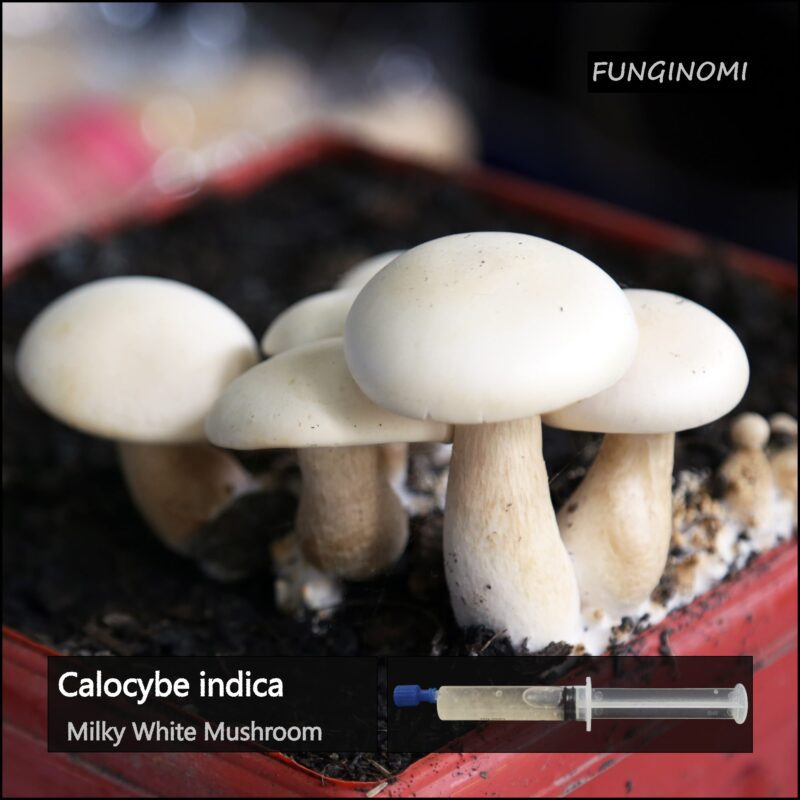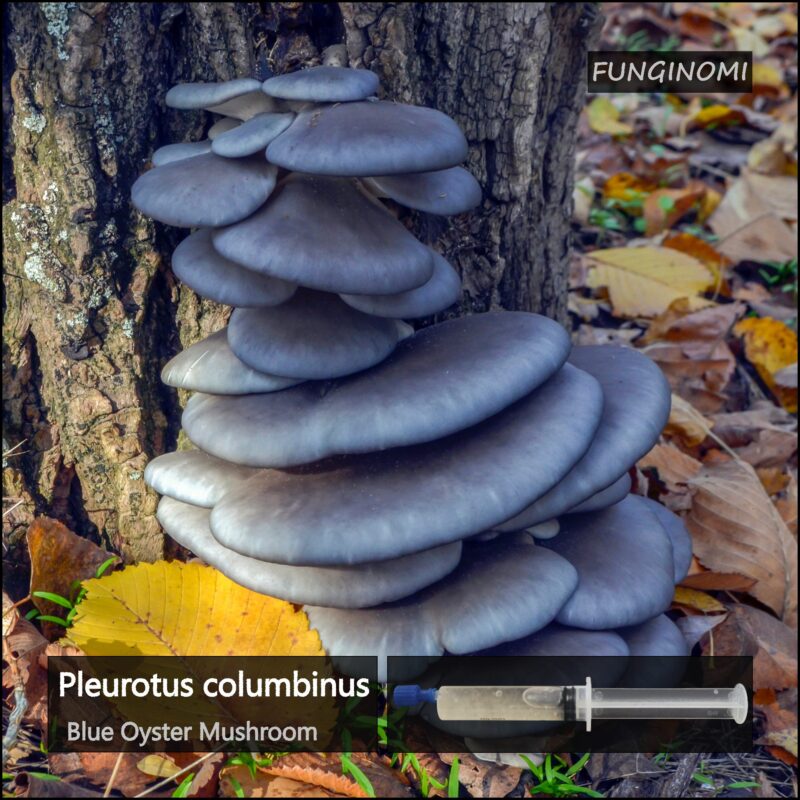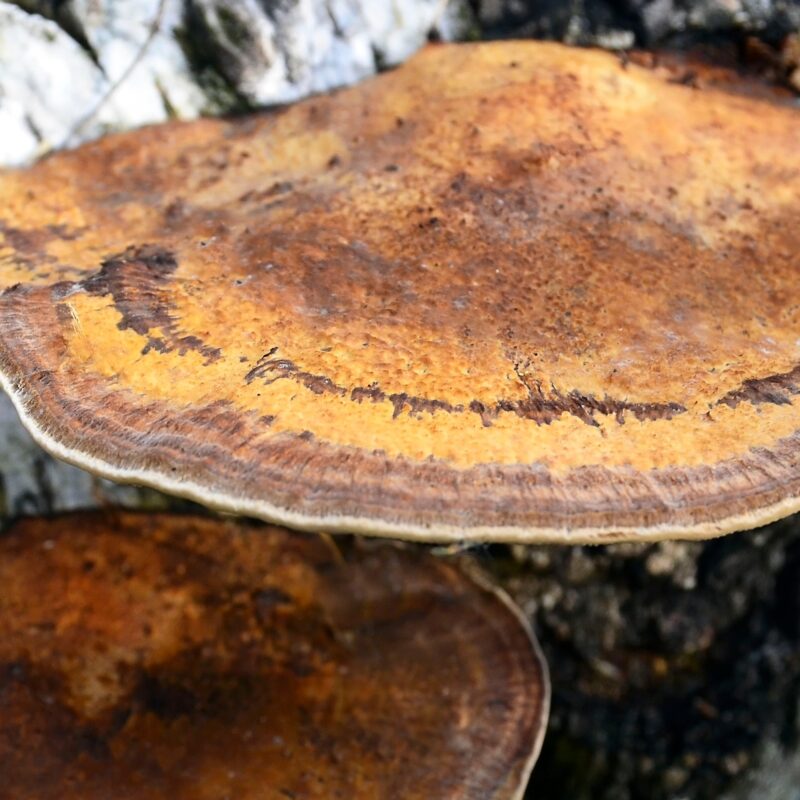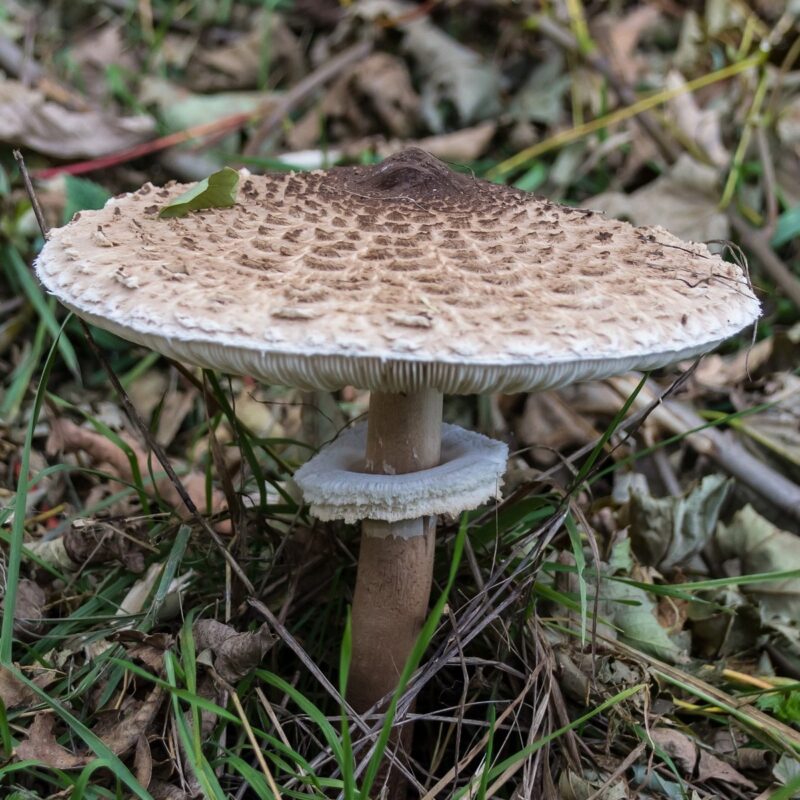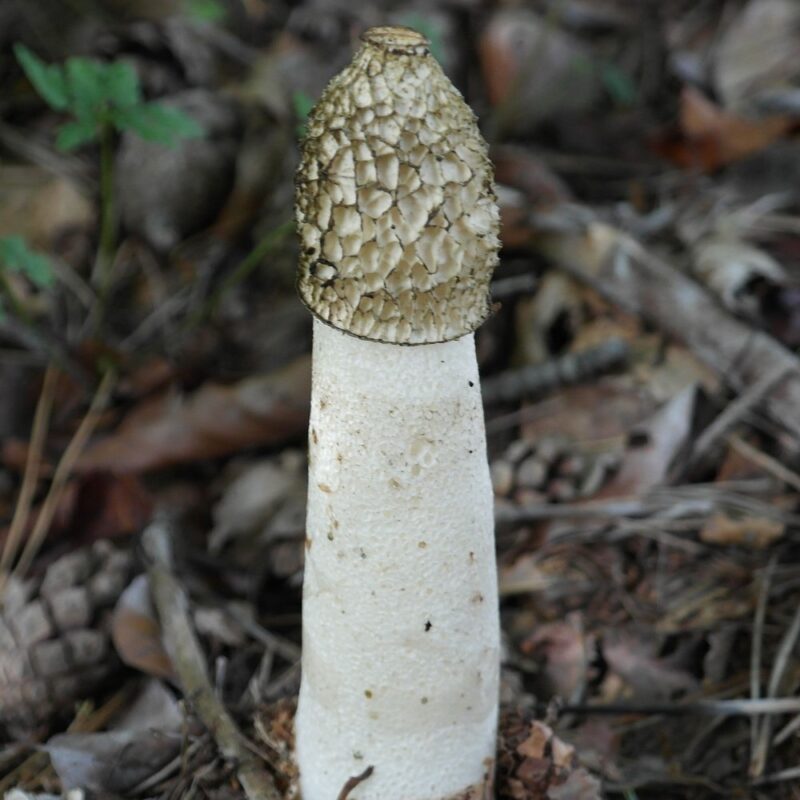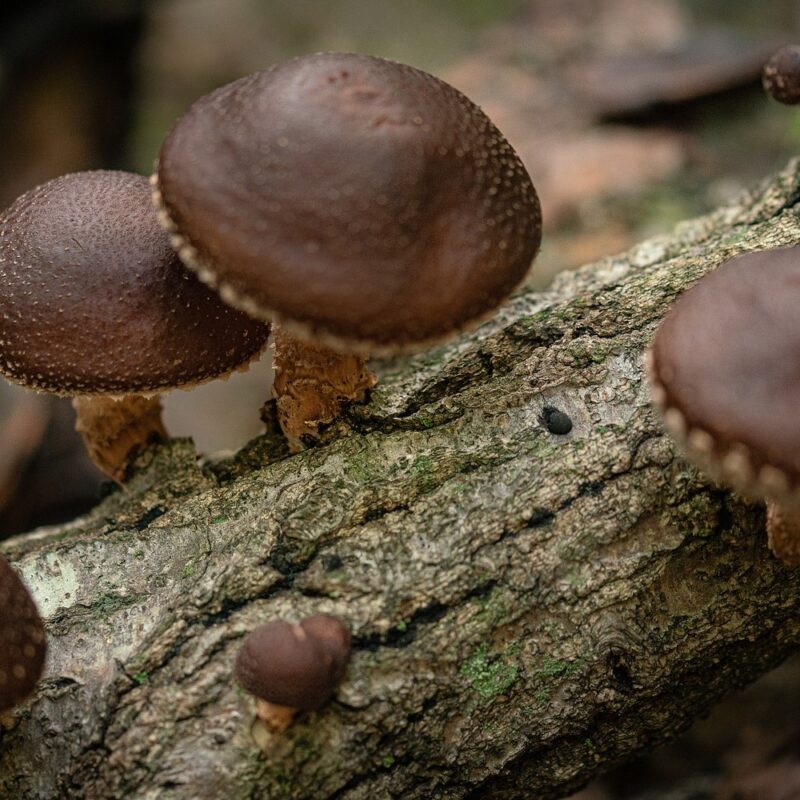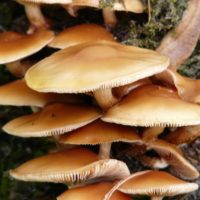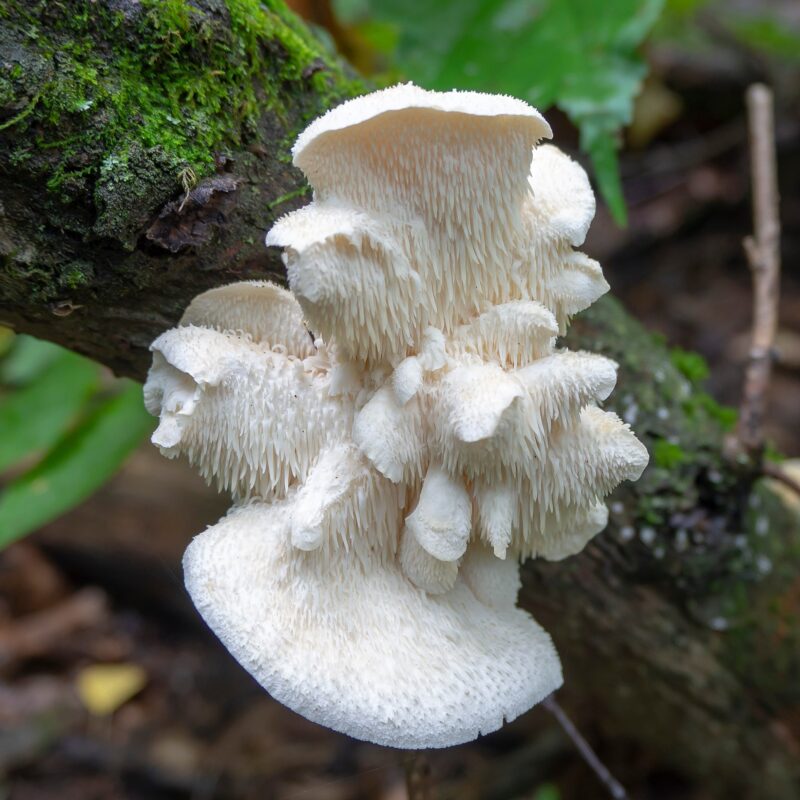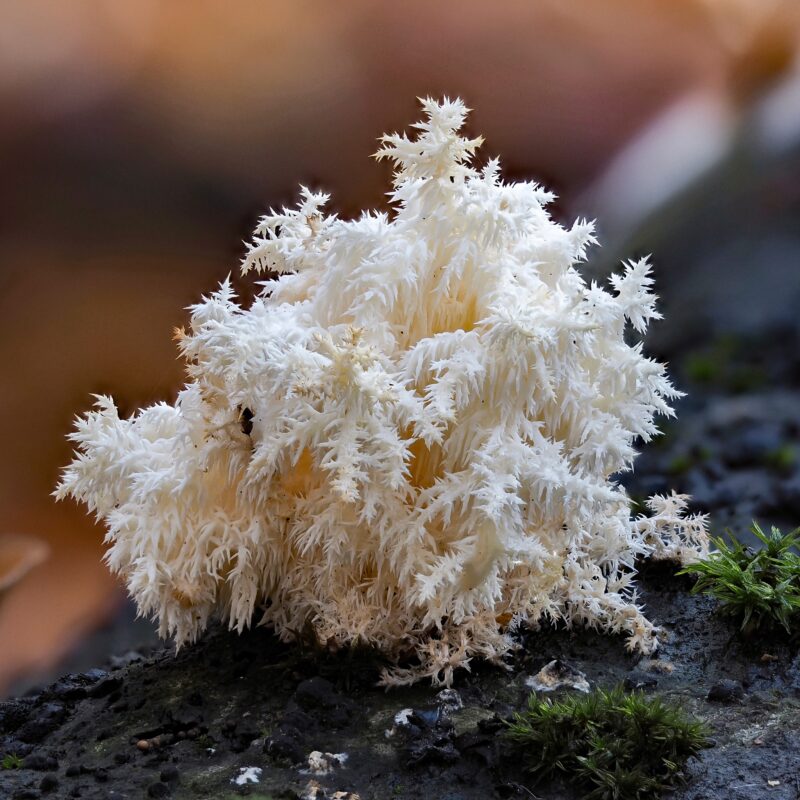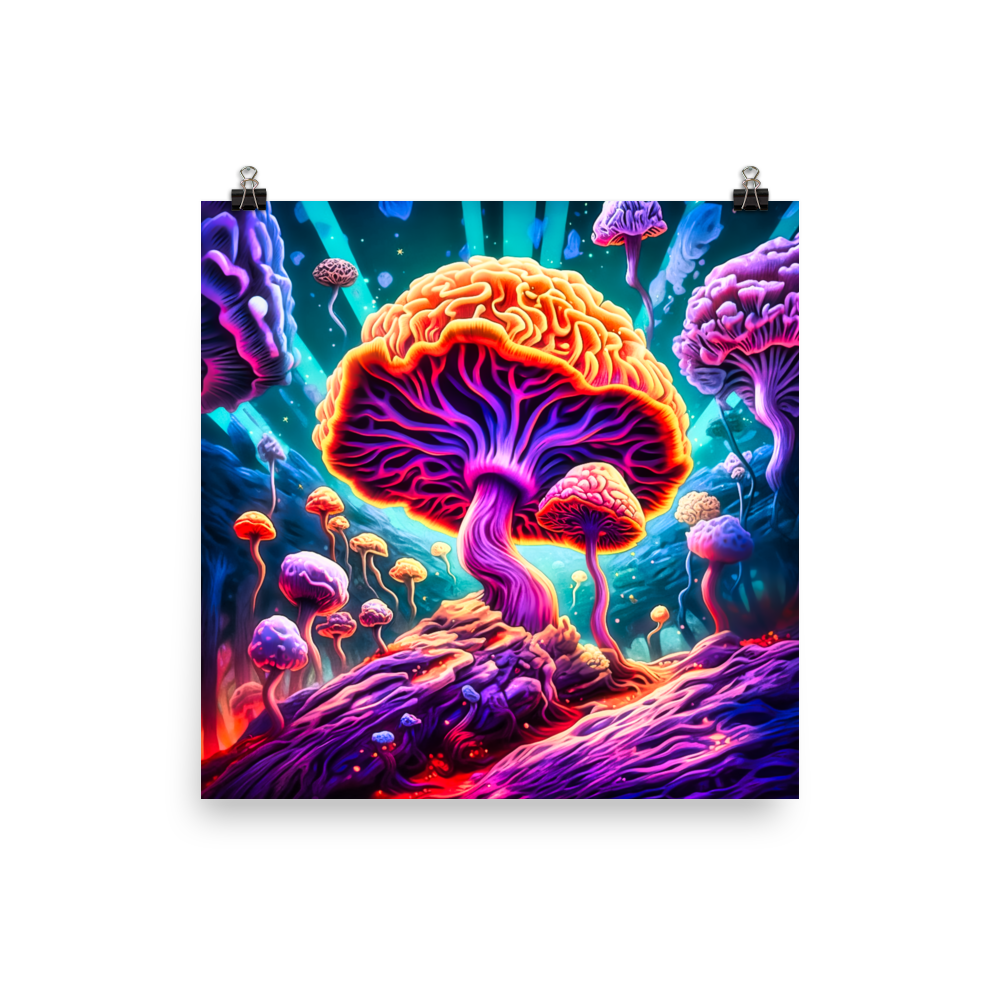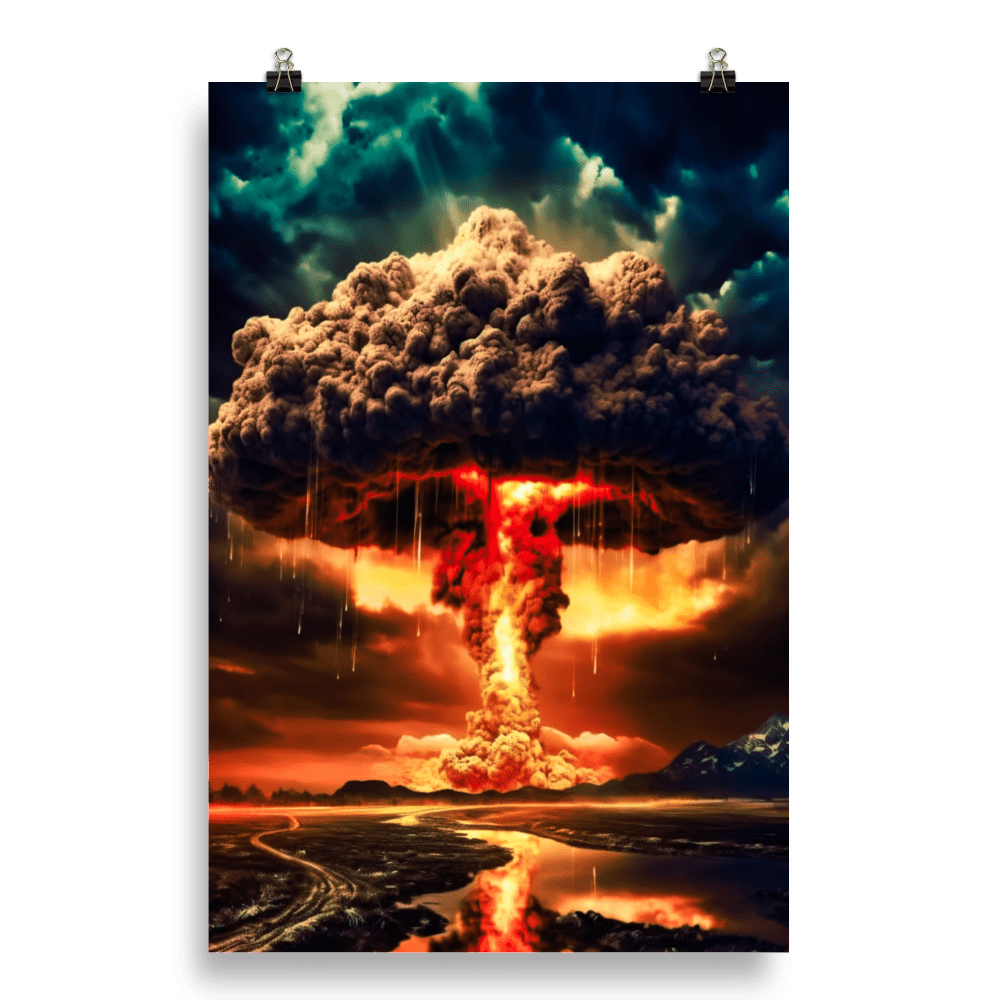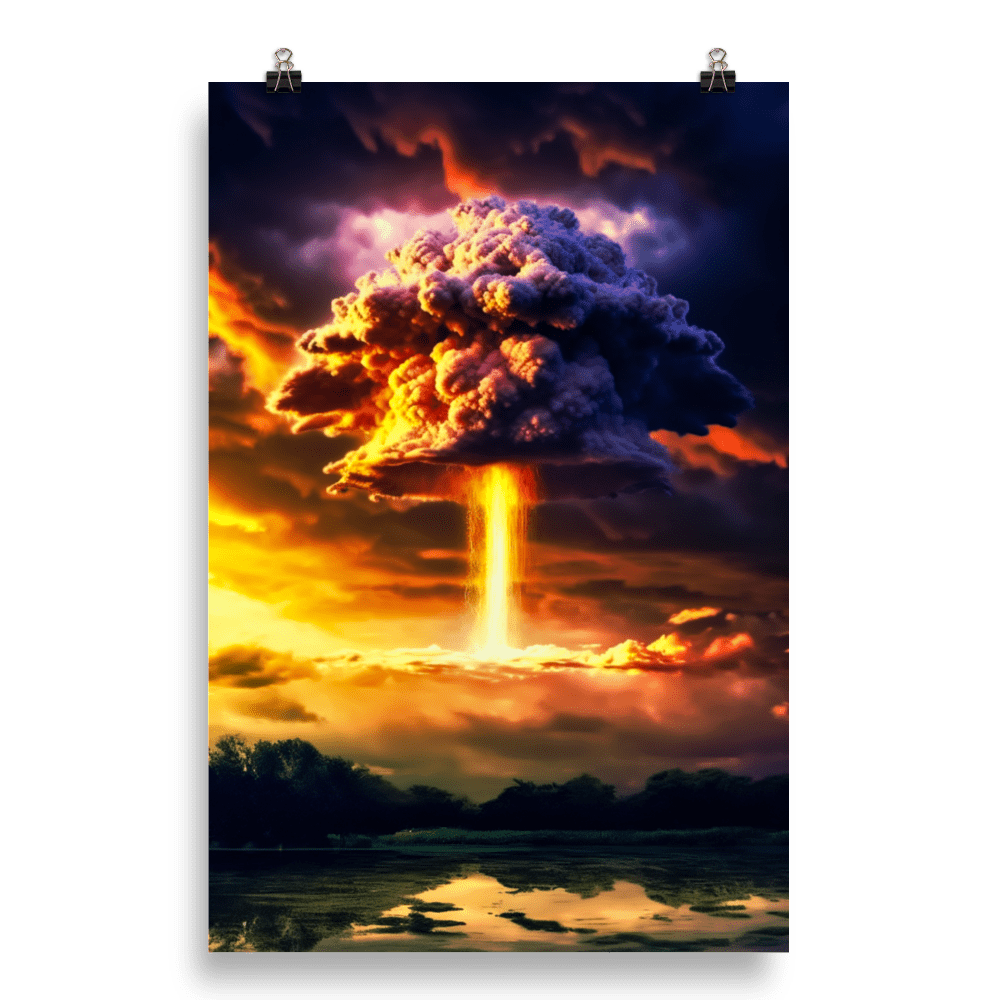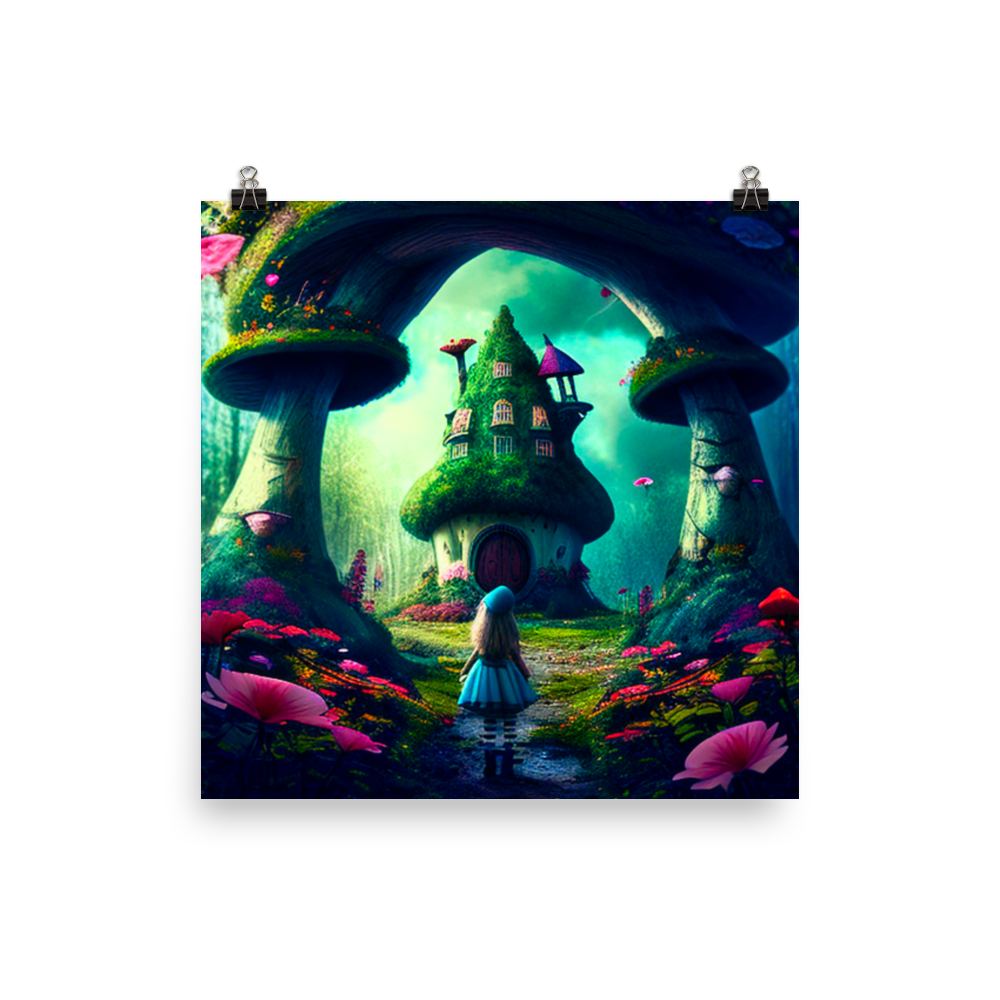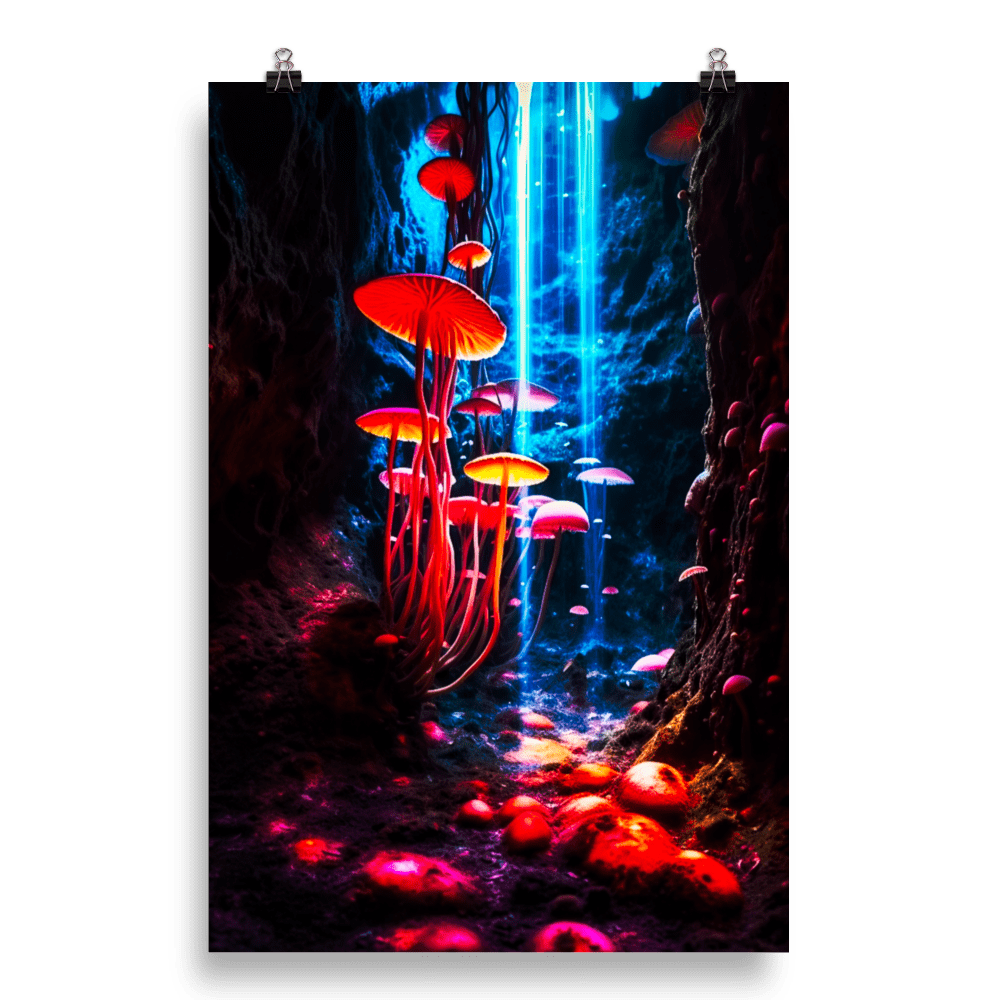A Comprehensive Guide to Shroom Active Ingredients: Understanding the Benefits and Effects
Introduction to Shroom Active Ingredients

Exploring the Fascinating World of Shrooms and Their Active Ingredients
Exploring the Fascinating World of Shrooms and Their Active Ingredients
Welcome to the captivating realm of magic mushrooms and their remarkable active ingredients. Magic mushrooms, often referred to as “shrooms,” have captivated human interest for centuries due to their psychedelic and therapeutic properties. In this comprehensive guide, we will embark on a journey to unravel the secrets of these mystical fungi and delve into the fascinating world of their active ingredients.
Magic mushroom active ingredients are the bioactive compounds found within these unique fungi that are responsible for their effects on the human mind and body. By understanding these active ingredients, we can gain valuable insights into the benefits and potential applications of magic mushrooms. Whether you’re a curious enthusiast, a researcher, or someone seeking alternative therapeutic options, this guide will provide you with a wealth of knowledge to navigate the captivating world of shrooms.
Join us as we explore the depths of magic mushroom active ingredients, from their definition and overview to the incredible benefits and effects they offer. We will also discuss important considerations such as dosage and preparation, ensuring that your journey into the realm of shrooms is safe, enjoyable, and enlightening.
Prepare to be enchanted by the wonders of magic mushroom active ingredients as we embark on this captivating adventure together. Let’s uncover the secrets, unveil the mysteries, and unlock the potential of these extraordinary fungi.
What Are Shroom Active Ingredients?
Definition and Overview of Shroom Active Ingredients
Definition and Overview of Shroom Active Ingredients
Magic mushrooms, commonly known as shrooms, contain a fascinating array of active ingredients that contribute to their unique effects. These active compounds interact with the brain’s receptors, resulting in various psychoactive and therapeutic experiences. Let’s explore the key active ingredients found in magic mushrooms:
-
Psilocybin: Psilocybin is the primary active compound in magic mushrooms. It belongs to a class of chemicals called tryptamines and is converted into psilocin in the body. Psilocybin is responsible for the psychedelic effects of shrooms, including altered perception, visual and auditory hallucinations, and expanded consciousness.
-
Psilocin: Psilocin is the metabolite of psilocybin, meaning it is the compound that is produced when psilocybin is broken down in the body. It acts as a serotonin receptor agonist, influencing the brain’s serotonin system. Psilocin is crucial for the profound and transformative experiences reported by users.
-
Baeocystin: Baeocystin is a lesser-known active ingredient found in some species of magic mushrooms. It is structurally related to psilocybin and psilocin and is believed to contribute to the overall psychedelic effects. While its specific role is not yet fully understood, it adds to the complexity of shroom experiences.
-
Norbaeocystin: Norbaeocystin is another compound present in certain magic mushroom species. It is closely related to baeocystin and is thought to have similar effects. The exact mechanisms of norbaeocystin and its individual impact on shroom experiences require further research.
These active ingredients work in synergy to create the distinct effects associated with magic mushrooms. It is important to note that the concentration of these compounds can vary between mushroom species and even within individual mushrooms.
By understanding the definition and overview of these shroom active ingredients, we can better appreciate the profound effects they elicit and explore their potential therapeutic applications.
Importance of Active Ingredients in Shrooms
Importance of Active Ingredients in Shrooms
The active ingredients found in magic mushrooms, or shrooms, play a pivotal role in shaping the effects and benefits associated with their consumption. Understanding the importance of these active ingredients is key to comprehending the potential impact of shrooms on the mind and body. Here are several reasons why these active ingredients hold significance:
-
Psychoactive Effects: The active compounds in shrooms, such as psilocybin and psilocin, are responsible for the psychedelic experiences that users seek. These compounds interact with serotonin receptors in the brain, leading to altered perception, hallucinations, and expanded states of consciousness. The unique combination and concentration of active ingredients in each mushroom species contribute to the distinct psychoactive effects they produce.
-
Therapeutic Potential: Magic mushroom active ingredients have garnered attention for their potential therapeutic benefits. Research suggests that psilocybin, in particular, may offer promising outcomes in the treatment of various mental health conditions, including depression, anxiety, PTSD, and addiction. These active compounds are believed to work by promoting neuroplasticity, enhancing emotional processing, and inducing mystical experiences that can have long-lasting positive effects.
-
Personal Growth and Insight: The effects of shrooms extend beyond the purely recreational realm. Many users report profound introspective experiences, heightened self-awareness, and spiritual insights. The active ingredients facilitate a shift in perspective, allowing individuals to explore their thoughts, emotions, and beliefs in a profound and transformative manner. These experiences can lead to personal growth, increased empathy, and a broader understanding of oneself and the world.
-
Dosage and Safety Considerations: Understanding the active ingredients in shrooms is crucial for determining the appropriate dosage and ensuring a safe experience. Different mushroom species contain varying concentrations of active compounds, which directly influence the intensity and duration of the effects. Knowledge of these active ingredients enables users to approach shroom consumption with caution, adhering to harm reduction practices and minimizing potential risks.
-
Scientific Research and Advancements: The active ingredients in shrooms have gained attention from researchers and scientists seeking to unravel their mechanisms of action and potential applications. Ongoing studies are exploring the therapeutic efficacy of these compounds and their potential impact on mental health. By understanding the importance of active ingredients, researchers can delve deeper into the therapeutic potential of shrooms and potentially develop novel treatments.
In conclusion, recognizing the significance of active ingredients in shrooms is essential for comprehending their psychoactive effects, therapeutic potential, personal growth experiences, safety considerations, and scientific advancements. By expanding our understanding of these compounds, we can navigate the world of shrooms with greater awareness, respect, and potential benefits.
Key Shroom Active Ingredients:
Psilocybin
Understanding Psilocybin: Properties and Effects
Understanding Psilocybin: Properties and Effects
Psilocybin is a naturally occurring psychedelic compound found in various species of magic mushrooms. It is renowned for its profound effects on the mind and is responsible for the psychedelic experiences associated with shroom consumption. Here, we delve into the properties and effects of psilocybin:
- Chemical Structure: Psilocybin belongs to a class of chemicals known as tryptamines. Structurally, it closely resembles the neurotransmitter serotonin, allowing it to interact with serotonin receptors in the brain. Upon ingestion, psilocybin is metabolized into psilocin, which is the active form responsible for the psychoactive effects.
- Psychedelic Effects: Psilocybin induces a range of psychedelic effects, which can vary in intensity depending on dosage, set (mental state), and setting (environment). Common effects include sensory alterations, enhanced perception of colors and patterns, synesthesia (cross-sensory experiences), and time distortion. Users often report feelings of euphoria, interconnectedness, and a profound sense of unity with the universe.
- Altered Perception and Sensory Experience: One of the hallmark effects of psilocybin is its ability to modify perception and sensory experiences. Users may perceive the world around them differently, with enhanced visual acuity, intensified emotions, and increased sensitivity to sounds and textures. This altered state of consciousness can lead to profound introspection and self-reflection.
- Mood and Emotional Effects: Psilocybin has been shown to have a significant impact on mood and emotions. It can induce feelings of bliss, empathy, and connectedness, often described as a “mystical” or “spiritual” experience. Some users report profound insights, a sense of awe, and a greater appreciation for life. However, it’s important to note that psilocybin can also amplify existing emotions, so a supportive and safe environment is crucial.
As research on psilocybin advances, our understanding of its properties and effects continues to evolve. Its ability to induce profound experiences and potentially benefit mental health has sparked interest and ongoing exploration. By recognizing the properties and effects of psilocybin, individuals can approach its usage with informed awareness, fostering a greater potential for personal growth, self-exploration, and therapeutic outcomes.
Therapeutic Potential of Psilocybin
Therapeutic Potential of Psilocybin
Psilocybin, the primary active compound found in magic mushrooms, has garnered significant attention for its potential therapeutic benefits. Research indicates that psilocybin-assisted therapy may offer new avenues for treating various mental health conditions. Here, we explore the therapeutic potential of psilocybin:
-
Depression and Anxiety: Psilocybin has shown promise in alleviating symptoms of depression and anxiety. Clinical trials have demonstrated that a single or limited number of psilocybin sessions, combined with therapy, can lead to significant and long-lasting reductions in depressive symptoms. Psilocybin-assisted therapy has also been associated with decreased anxiety and improved emotional well-being.
-
Addiction Treatment: Psilocybin has shown potential in addressing addiction, particularly in the context of substance use disorders. Research suggests that psilocybin-assisted therapy can help individuals overcome addictive behaviors by promoting introspection, increasing motivation for change, and facilitating a shift in perspective. It has been explored as a therapeutic tool for smoking cessation, alcohol dependence, and other substance-related disorders.
-
Post-Traumatic Stress Disorder (PTSD): Psilocybin-assisted therapy shows promise in the treatment of PTSD. Studies have demonstrated that psilocybin can help individuals process traumatic experiences, reduce avoidance symptoms, and improve overall well-being. It is believed that the compound’s ability to facilitate a profound and introspective experience may contribute to its therapeutic effects in PTSD treatment.
-
End-of-Life Distress: Psilocybin has been investigated for its potential to alleviate psychological distress in individuals facing terminal illnesses. Research indicates that psilocybin-assisted therapy can help individuals cope with anxiety, existential distress, and fear of death. It has shown the potential to improve quality of life, enhance emotional well-being, and foster a sense of meaning and acceptance in end-of-life care.
-
Neuroplasticity and Brain Function: Psilocybin has been found to promote neuroplasticity, the brain’s ability to reorganize and form new connections. This may underlie its therapeutic effects by facilitating changes in neural pathways associated with mood regulation, cognition, and emotional processing. Psilocybin’s impact on brain function is an area of ongoing research and may hold promise for a deeper understanding of its therapeutic potential.
It is important to note that psilocybin-assisted therapy is typically conducted in a controlled and supportive environment with trained professionals. The therapeutic effects of psilocybin are not solely due to the compound itself but also the integration of therapy and psychological support.
While further research is needed to fully understand the therapeutic mechanisms and optimize treatment protocols, psilocybin’s potential to positively impact mental health is an exciting area of exploration. Continued scientific inquiry may lead to new and innovative therapeutic approaches that harness the therapeutic potential of psilocybin for the betterment of individuals’ well-being.
Safety Considerations and Precautions
Safety Considerations and Precautions
While psilocybin is generally considered to have a favorable safety profile, responsible use and adherence to precautions are essential to ensure a safe and positive experience. Here are some important safety considerations and precautions to keep in mind when using psilocybin:
-
Set and Setting: The mindset and environment in which psilocybin is consumed greatly influence the experience. It is crucial to approach psilocybin with a positive mindset, in a safe and comfortable setting. Choose a calm, familiar, and supportive environment, ideally with trusted individuals who can provide guidance and support throughout the experience.
-
Start with a Low Dose: If you are new to psilocybin or have limited experience, it is advisable to start with a low dose. This allows you to gauge your sensitivity to the compound and gradually acclimate to its effects. Dosing can vary depending on the mushroom species, so it is important to research and understand the potency of the specific mushrooms being consumed.
-
Harm Reduction Practices: Familiarize yourself with harm reduction practices to minimize potential risks. These practices include ensuring you are well-rested and in good physical health before consuming psilocybin, staying hydrated, and avoiding combining psilocybin with other substances, including alcohol and certain medications. Additionally, having a sober sitter present can provide an extra layer of safety and support.
-
Know the Source: If you are obtaining psilocybin-containing mushrooms, it is crucial to ensure they are sourced from a trusted and reputable supplier. This helps reduce the risk of consuming misidentified or potentially harmful fungi. Educate yourself on the different species of magic mushrooms and learn to identify them accurately if you plan to forage for your own.
-
Integration and Support: After a psilocybin experience, it is important to take time for integration. Reflect on the insights and experiences gained during the journey, and consider discussing them with a supportive and understanding individual or a trained professional. Integration can help make meaning of the experience and facilitate personal growth.
-
Legal Considerations: Psilocybin’s legal status varies depending on your location. Familiarize yourself with the laws and regulations governing psilocybin in your area to ensure compliance with the law.
It is worth noting that psilocybin can produce intense psychological effects and may not be suitable for everyone. Individuals with a personal or family history of psychiatric disorders or individuals who are currently experiencing acute mental health issues should exercise caution and consult with a healthcare professional before using psilocybin.
Ultimately, responsible use, proper preparation, and adherence to safety precautions can contribute to a safer and more rewarding psilocybin experience. If in doubt, seeking guidance from experienced individuals or professionals well-versed in psychedelic therapy can provide valuable insights and support.
Psilocin
Exploring Psilocin: A Breakdown of Its Effects
Exploring Psilocin: A Breakdown of Its Effects
Psilocin is the active metabolite of psilocybin, the primary psychedelic compound found in magic mushrooms. Once ingested, psilocybin is rapidly converted into psilocin in the body. Psilocin interacts with serotonin receptors in the brain, resulting in a range of effects. Let’s explore the breakdown of psilocin’s effects:
-
Altered Perception: Psilocin is known for its ability to induce profound changes in perception. Users often experience enhanced visual acuity, intensified colors, patterns, and textures. Everyday objects may appear more vivid and alive, and the boundaries between different senses can become blurred, leading to synesthetic experiences where senses overlap.
-
Visual and Auditory Hallucinations: Psilocin can induce visual and auditory hallucinations, particularly at higher doses. These hallucinations can vary from subtle distortions to more vivid and immersive experiences. Users may see geometric patterns, fractals, or experience a sense of “breathing” in their surroundings. Auditory hallucinations can range from heightened sensitivity to sounds to perceiving music or voices that aren’t present.
-
Expanded Consciousness: Psilocin is known to induce an expanded state of consciousness. Users often report a profound sense of interconnectedness with the world around them, a dissolution of ego boundaries, and an enhanced awareness of the present moment. This can lead to deep introspection, insights, and a heightened sense of spirituality or connection to something greater.
-
Emotional and Mood Effects: Psilocin can significantly influence emotions and mood. It may induce feelings of euphoria, joy, and a sense of profound well-being. However, it can also amplify existing emotions, so it is important to approach psilocin experiences with a positive mindset and in a supportive environment.
-
Cognitive Effects: Psilocin can impact cognitive processes, including creativity, problem-solving, and pattern recognition. Users often report increased fluidity of thought, enhanced introspection, and a different perspective on their thoughts and beliefs. This can lead to new insights, self-reflection, and personal growth.
-
Mind-Body Connection: Psilocin can also affect the mind-body connection. Users may experience a heightened awareness of bodily sensations, increased sensitivity, and a deepened appreciation for physical experiences such as touch or movement. Some individuals report a sense of energy flow or a feeling of being more connected to their body.
It is important to note that the effects of psilocin can vary depending on factors such as dosage, individual sensitivity, mindset, and the environment in which it is consumed. Each person’s experience is unique, and the effects can be influenced by personal factors and the specific mushroom species consumed.
Additionally, it is crucial to approach psilocin use responsibly, with awareness of set (mindset) and setting (environment). Creating a safe and supportive space and being mindful of dosage can contribute to a positive and meaningful experience.
As research into psilocin and its effects continues to evolve, a deeper understanding of its impact on the mind and body is being gained. Exploring psilocin can offer individuals the opportunity for self-exploration, introspection, and potentially transformative experiences.
Similarities and Differences with Psilocybin
Similarities and Differences with Psilocybin
Psilocybin and psilocin are closely related compounds found in magic mushrooms, and they share some similarities in their effects. However, there are also notable differences between the two. Let’s explore the similarities and differences:
Similarities:
-
Psychoactive Effects: Both psilocybin and psilocin are responsible for the psychoactive effects experienced when consuming magic mushrooms. They interact with serotonin receptors in the brain, leading to altered perception, hallucinations, and an expanded state of consciousness.
-
Hallucinations and Altered Perception: Both compounds can induce visual and auditory hallucinations, as well as an altered perception of colors, shapes, and patterns. Users may experience sensory distortions, synesthesia, and an enhanced appreciation of their surroundings.
-
Emotional and Mood Effects: Both psilocybin and psilocin can influence emotions and mood. They have the potential to induce feelings of euphoria, joy, and connectedness. However, they can also amplify existing emotions, so a positive mindset and supportive environment are crucial for a positive experience.
Differences:
-
Chemical Structure: The primary difference between psilocybin and psilocin lies in their chemical structure. Psilocybin is a phosphorylated ester of psilocin, meaning it contains an additional phosphate group. Psilocybin is converted into psilocin through dephosphorylation, which occurs when ingested.
-
Onset and Duration: Due to the conversion process, psilocybin typically takes longer to take effect compared to psilocin. Psilocybin needs to be metabolized into psilocin before it can exert its psychoactive effects. As a result, the onset of psilocybin is usually slower, while psilocin has a faster onset. Psilocin also has a shorter duration of effects compared to psilocybin.
-
Dosage and Potency: Psilocybin and psilocin can vary in concentration among different mushroom species. However, psilocybin is generally found in higher amounts than psilocin. This means that consuming the same weight of mushrooms containing psilocybin would likely result in a higher psilocin dose compared to consuming pure psilocin.
-
Stability and Storage: Psilocybin is more stable than psilocin, especially in its dried form. When magic mushrooms are dried and stored, psilocybin content is better preserved compared to psilocin. This is important to consider when storing mushrooms or preparing for consumption.
It’s important to note that while psilocybin is the prodrug of psilocin and undergoes conversion in the body, both compounds are responsible for the overall psychedelic experience. Their effects can overlap, but the differences in their pharmacokinetics and potency can lead to variations in the subjective experience.
Understanding the similarities and differences between psilocybin and psilocin can contribute to a better grasp of the pharmacology and effects of magic mushrooms. It’s crucial to approach their usage responsibly, with awareness of dosage, set, and setting, and to adhere to harm reduction practices for a safe and positive experience.
Psychological and Physiological Impact
Psychological and Physiological Impact
Psilocybin and psilocin, the active compounds found in magic mushrooms, can have profound psychological and physiological effects on the user. Let’s explore their impact in both domains:
Psychological Impact:
-
Altered Perception and Hallucinations: Psilocybin and psilocin can induce alterations in perception, leading to visual and auditory hallucinations. Users may experience vivid and intense sensory experiences, such as enhanced colors, patterns, and distortions. These effects can result in a heightened sense of awe, wonder, and a shift in the perception of reality.
-
Expanded Consciousness and Spiritual Experiences: Both compounds have the potential to induce an expanded state of consciousness. Users often report a sense of interconnectedness with their surroundings, a dissolution of ego boundaries, and a deepened appreciation for the present moment. These experiences can be accompanied by feelings of unity, transcendence, and spirituality.
-
Emotional Effects and Mood Enhancement: Psilocybin and psilocin can profoundly influence emotions and mood. Users often report a range of emotional states, including euphoria, joy, and a sense of profound well-being. These compounds have the potential to increase emotional openness, introspection, and facilitate the processing of emotions, both positive and challenging.
-
Cognitive Effects and Enhanced Creativity: Psilocybin and psilocin can impact cognitive processes and creative thinking. Users often report heightened creativity, increased introspection, and a different perspective on thoughts and beliefs. These compounds may promote novel insights, facilitate problem-solving, and foster a sense of intellectual curiosity.
Physiological Impact:
-
Serotonergic Activation: Psilocybin and psilocin primarily interact with serotonin receptors in the brain, specifically the 5-HT2A receptor. This interaction leads to a cascade of effects, including changes in neurotransmitter release, neural connectivity, and activity in various brain regions. Serotonergic activation is believed to be responsible for the psychedelic effects of these compounds.
-
Neuroplasticity and Brain Connectivity: Psilocybin and psilocin have been found to promote neuroplasticity, the brain’s ability to reorganize and form new connections. They can increase neural connectivity, particularly between brain regions involved in perception, cognition, and emotional processing. This may contribute to the profound and long-lasting effects on consciousness and psychological well-being.
-
Blood Pressure and Heart Rate: Psilocybin and psilocin can cause mild changes in physiological parameters. They may lead to increases in blood pressure and heart rate, although these effects are generally modest and well-tolerated by healthy individuals. Individuals with pre-existing cardiovascular conditions should exercise caution and consult a healthcare professional before using these substances.
-
Pupillary Dilation: Psilocybin and psilocin can cause pupillary dilation (enlargement of the pupils). This effect occurs due to the activation of certain serotonin receptors in the brainstem, leading to changes in the autonomic nervous system.
It’s important to note that individual experiences and responses to psilocybin and psilocin can vary. Factors such as dosage, set (mindset), and setting (environment) can significantly influence the psychological and physiological effects. Responsible use, proper preparation, and a supportive environment are crucial for maximizing the potential benefits and minimizing potential risks associated with these substances.
It is advisable to approach these substances with caution, especially for individuals with pre-existing mental health conditions or those who are taking medications. Consulting with a healthcare professional or seeking guidance from experienced individuals can provide valuable insights and support when exploring the psychological and physiological impact of psilocybin and psilocin.
Baeocystin
Unveiling Baeocystin: Functions and Characteristics
Unveiling Baeocystin: Functions and Characteristics
Baeocystin is a naturally occurring compound found in certain species of psychedelic mushrooms, alongside psilocybin and psilocin. Although its presence in mushrooms is typically lower compared to psilocybin and psilocin, baeocystin contributes to the overall psychedelic experience. Let’s explore the functions and characteristics of baeocystin:
-
Chemical Structure: Baeocystin is structurally related to psilocybin and psilocin. It is a derivative of the β-carboline alkaloid family, sharing a similar indole structure. However, it differs from psilocybin and psilocin in the arrangement of its chemical bonds.
-
Psychoactive Properties: Baeocystin is considered to have psychoactive properties, although its effects are not as well-studied as psilocybin and psilocin. Users often report similar psychedelic effects, including altered perception, visual and auditory hallucinations, emotional shifts, and an expanded state of consciousness.
-
Potency and Dosage: Baeocystin is typically found in lower concentrations compared to psilocybin and psilocin in magic mushrooms. Its potency and effects may vary depending on the specific mushroom species and individual sensitivity. Due to its lower abundance, baeocystin’s individual contribution to the overall psychedelic experience may be less pronounced compared to psilocybin and psilocin.
-
Synergistic Effects: Baeocystin is believed to work in synergy with psilocybin and psilocin to enhance the overall psychedelic experience. Although its exact role and contribution are not yet fully understood, the combination of these compounds is thought to create a unique and comprehensive range of effects on perception, cognition, and emotions.
-
Pharmacological Mechanisms: Like psilocybin and psilocin, baeocystin primarily interacts with serotonin receptors in the brain, particularly the 5-HT2A receptor. This interaction leads to alterations in neurotransmitter release, neural activity, and connectivity, which underlie the psychedelic effects experienced by users.
-
Research and Studies: Baeocystin has received less research attention compared to psilocybin and psilocin. Most studies exploring the pharmacology and effects of magic mushrooms have primarily focused on psilocybin and psilocin. Therefore, further research is needed to fully understand the functions and characteristics of baeocystin and its specific contributions to the psychedelic experience.
It’s important to note that the effects of baeocystin can vary between individuals and mushroom species. Furthermore, the overall experience of using magic mushrooms is a result of the combined presence and interactions of various compounds, including psilocybin, psilocin, and baeocystin.
As the scientific understanding of psychedelic compounds continues to expand, further research on baeocystin will contribute to a deeper understanding of its functions, characteristics, and potential therapeutic applications.
Synergistic Effects with Psilocybin and Psilocin
Synergistic Effects with Psilocybin and Psilocin
Baeocystin, along with psilocybin and psilocin, is one of the active compounds found in magic mushrooms. While baeocystin’s specific effects are not as extensively studied as psilocybin and psilocin, it is believed to work in synergy with these compounds, enhancing the overall psychedelic experience. Here are some potential synergistic effects of baeocystin with psilocybin and psilocin:
-
Potency and Duration: Baeocystin, even though it is present in lower concentrations, can contribute to the overall potency of the psychedelic experience when combined with psilocybin and psilocin. The interaction of these compounds may amplify the effects, leading to a more intense and prolonged experience.
-
Altered Perception and Hallucinations: The combination of psilocybin, psilocin, and baeocystin can synergistically enhance altered perception and induce visual and auditory hallucinations. The interplay of these compounds may result in more vivid and immersive sensory experiences, such as intensified colors, patterns, and distortions.
-
Expanded Consciousness and Spiritual Experiences: The synergy between baeocystin, psilocybin, and psilocin can contribute to an expanded state of consciousness and facilitate profound spiritual experiences. Users often report a sense of interconnectedness, ego dissolution, and an enhanced appreciation of the present moment. The combined effects of these compounds may deepen these experiences.
-
Emotional and Mood Effects: Baeocystin, along with psilocybin and psilocin, can collectively influence emotions and mood. The synergy between these compounds may intensify feelings of euphoria, joy, and emotional openness. Users may experience a profound sense of well-being, empathy, and emotional insights.
-
Cognitive Effects and Creativity: The combination of baeocystin, psilocybin, and psilocin can potentially enhance cognitive effects and promote creativity. Users may experience increased fluidity of thought, enhanced problem-solving abilities, and a fresh perspective on ideas and concepts. The synergistic effects may foster a state of heightened creativity and intellectual curiosity.
It’s important to note that individual responses to these compounds and their synergistic effects can vary. Factors such as dosage, set (mindset), and setting (environment) play significant roles in shaping the overall experience. Additionally, the specific mushroom species and their unique chemical compositions can further influence the synergy between these compounds.
As research on psychedelics continues to advance, a deeper understanding of the synergistic effects of baeocystin, psilocybin, and psilocin will be gained. These compounds, when used responsibly and in supportive settings, have the potential to offer transformative experiences and therapeutic benefits.
Exploring Research and Potential Benefits
Exploring Research and Potential Benefits
Psilocybin, psilocin, and baeocystin, the active compounds found in magic mushrooms, have attracted increasing attention from researchers and clinicians due to their potential therapeutic benefits. While research in this field is ongoing, several studies have shown promising results. Here are some areas of research and potential benefits associated with these compounds:
-
Mental Health Disorders: Psilocybin-assisted therapy has shown promise in the treatment of various mental health disorders, including depression, anxiety, post-traumatic stress disorder (PTSD), and addiction. Clinical trials have demonstrated significant reductions in depressive and anxious symptoms, along with improvements in emotional well-being and quality of life.
-
Addiction Treatment: Psilocybin-assisted therapy has been explored as a potential treatment for substance use disorders, including nicotine addiction, alcoholism, and opioid dependence. Research suggests that psilocybin can facilitate a transformative experience that promotes increased self-reflection, introspection, and a sense of connectedness, which may aid in breaking addictive patterns.
-
End-of-Life Distress: Psilocybin therapy has shown promise in improving the emotional well-being and reducing existential distress in individuals with life-threatening illnesses, such as cancer. Research has demonstrated reductions in anxiety, depression, and fear of death, along with an increased acceptance of mortality and enhanced spiritual well-being.
-
Neuroplasticity and Neural Connectivity: Psilocybin and its derivatives have been found to promote neuroplasticity—the brain’s ability to reorganize and form new connections. This may have implications for the treatment of neurodegenerative disorders and cognitive enhancement. Studies suggest that these compounds can increase neural connectivity and facilitate changes in brain networks associated with cognition, emotion, and consciousness.
-
Mood Enhancement and Well-being: Psilocybin and its counterparts have been reported to elicit positive mood states, enhanced emotional openness, and increased well-being. Users often describe lasting positive changes in their attitudes, values, and life satisfaction following a psychedelic experience.
-
Cluster Headaches: Preliminary research suggests that psilocybin may have a therapeutic potential in the treatment of cluster headaches, a severe and debilitating condition. Psilocybin has been found to reduce the frequency and intensity of cluster headache attacks, providing relief for affected individuals.
It’s important to note that while these compounds hold promise, their therapeutic applications are still being explored, and further research is needed to establish their safety, efficacy, and optimal treatment protocols. Medical use of these substances should be conducted under the supervision of trained professionals in controlled settings.
As the field of psychedelic research continues to evolve, ongoing studies are further elucidating the mechanisms of action and potential benefits of psilocybin, psilocin, and baeocystin. These compounds offer exciting possibilities for mental health treatment and have the potential to reshape the way we approach various psychological and neurological conditions.
Additional Shroom Active Ingredients
Norbaeocystin
Understanding Norbaeocystin: Lesser-Known Compound
Understanding Norbaeocystin: Lesser-Known Compound
Norbaeocystin is a lesser-known compound found in magic mushrooms, alongside other active compounds like psilocybin, psilocin, and baeocystin. While its role and effects are not as extensively studied, it contributes to the overall chemical composition and potential effects of magic mushrooms. Here’s an overview of norbaeocystin:
-
Chemical Structure: Norbaeocystin is a derivative of baeocystin, sharing a similar indole structure. It is formed from the dephosphorylation of baeocystin during the drying and storage process of magic mushrooms. Structurally, it is closely related to baeocystin and psilocybin.
-
Presence and Concentration: Norbaeocystin is typically present in lower concentrations compared to psilocybin, psilocin, and baeocystin in magic mushrooms. Its exact concentration can vary depending on the mushroom species, environmental factors, and storage conditions.
-
Psychoactive Properties: While specific research on norbaeocystin’s psychoactive properties is limited, it is believed to contribute to the overall psychedelic experience of magic mushrooms. It is thought to have similar effects to other active compounds, including alterations in perception, sensory experiences, and changes in consciousness.
-
Synergistic Effects: Norbaeocystin likely works in synergy with other compounds found in magic mushrooms, enhancing the overall psychedelic effects. The combined presence of norbaeocystin, psilocybin, psilocin, and baeocystin creates a complex chemical profile that influences the subjective experience of users.
-
Research Gap: Due to the limited research specifically focusing on norbaeocystin, its specific pharmacological actions and contributions to the psychedelic experience remain less understood compared to other compounds. Further research is needed to explore its effects, potential therapeutic applications, and mechanisms of action.
It’s important to note that the effects of norbaeocystin may vary between individuals and mushroom species. The overall psychedelic experience of using magic mushrooms is a result of the combined presence and interactions of various compounds. Factors such as dosage, set (mindset), and setting (environment) play significant roles in shaping the overall experience.
As scientific interest in psychedelic compounds continues to grow, further research on norbaeocystin and its interactions with other compounds will contribute to a deeper understanding of its role and potential effects.
Role in Shroom Experience
Role in Shroom Experience
Norbaeocystin is a lesser-known compound found in magic mushrooms, and its role in the overall psychedelic experience is not yet well-documented. While research specifically focusing on norbaeocystin is limited, it is believed to contribute to the overall effects of magic mushrooms in the following ways:
-
Potency and Synergy: Norbaeocystin, along with other active compounds like psilocybin, psilocin, and baeocystin, may contribute to the overall potency of the psychedelic experience. These compounds work together in a synergistic manner, influencing brain chemistry and producing the characteristic effects of magic mushrooms.
-
Altered Perception and Consciousness: Norbaeocystin, like other active compounds, is thought to play a role in altering perception and consciousness. It may contribute to visual and auditory hallucinations, sensory distortions, and changes in thought patterns. The combined presence of norbaeocystin with other compounds influences the intensity and quality of the psychedelic experience.
-
Mood and Emotional Effects: Norbaeocystin may contribute to the emotional effects experienced during a shroom trip. Magic mushrooms are known to induce a range of emotions, including euphoria, introspection, and emotional openness. Norbaeocystin’s presence likely contributes to the overall emotional state and may influence the depth and character of emotional experiences.
-
Individual Variations: It’s important to note that the effects of norbaeocystin can vary between individuals. Factors such as the dosage, individual brain chemistry, set (mindset), and setting (environment) all play a role in shaping the overall shroom experience. Some individuals may be more sensitive to norbaeocystin’s effects, while others may have different reactions.
While norbaeocystin’s specific effects and mechanisms of action are not yet fully understood, it is considered an integral part of the complex chemical makeup of magic mushrooms. Further research is needed to explore its precise contributions to the shroom experience and its potential therapeutic applications.
As the field of psychedelic research progresses, ongoing studies will provide a deeper understanding of norbaeocystin’s role in the overall effects of magic mushrooms. It’s important to approach the use of magic mushrooms responsibly, with proper knowledge, guidance, and respect for the potential risks and benefits involved.
Limited Research and Future Directions
Limited Research and Future Directions
Norbaeocystin, a compound found in magic mushrooms, has received limited research attention compared to other active compounds like psilocybin and psilocin. As a result, there is still much to learn about its specific effects, mechanisms of action, and potential therapeutic applications. Here’s an overview of the current state of research on norbaeocystin and potential future directions:
-
Research Gap: The limited research on norbaeocystin stems from its lower abundance in magic mushrooms compared to other active compounds. As a result, its effects and contributions to the overall psychedelic experience are not as well-documented. Further research is needed to explore its pharmacological properties, interactions with the brain, and potential therapeutic benefits.
-
Quantification and Analysis: Developing reliable methods for quantifying and analyzing norbaeocystin in magic mushrooms is an essential step in expanding the knowledge base. Improved techniques for detecting and measuring norbaeocystin concentrations will enable researchers to better understand its presence, variability, and potential effects.
-
Mechanisms of Action: Investigating the specific mechanisms of action of norbaeocystin is crucial for understanding how it interacts with the brain and contributes to the psychedelic experience. Further studies could explore its effects on neurotransmitter systems, receptor interactions, and neural networks, shedding light on its psychopharmacological properties.
-
Psychoactive Effects: Detailed investigations into the subjective effects of norbaeocystin are needed to understand its role in the overall psychedelic experience. Controlled studies that include rigorous assessments of psychological and perceptual effects would contribute to a better understanding of its unique contributions and potential synergies with other compounds.
-
Therapeutic Potential: Assessing the therapeutic potential of norbaeocystin is an exciting area for future research. Studying its effects on mental health disorders, addiction, and end-of-life distress, among other areas, could help determine its potential applications in therapeutic settings.
-
Combination Effects: Considering the complex chemical composition of magic mushrooms, future research should explore the combined effects of norbaeocystin with other active compounds like psilocybin, psilocin, and baeocystin. Understanding how these compounds interact and influence each other’s effects will provide a more comprehensive understanding of the psychedelic experience.
As the field of psychedelic research continues to expand, it is likely that more attention will be given to norbaeocystin. Continued investigations into its properties, effects, and therapeutic potential will contribute to a more comprehensive understanding of the compounds present in magic mushrooms and their potential applications in mental health and well-being.
It is important to note that the use of magic mushrooms and related compounds should always be approached responsibly, following applicable laws and regulations, and with guidance from trained professionals.
Aeruginascin
Shedding Light on Aeruginascin: Recent Discoveries
Shedding Light on Aeruginascin: Recent Discoveries
Aeruginascin is a relatively newly discovered compound found in certain species of magic mushrooms. Although it is not as well-known as other active compounds like psilocybin and psilocin, recent research has begun to shed light on its presence, properties, and potential effects. Here are some of the recent discoveries regarding aeruginascin:
-
Identification and Occurrence: Aeruginascin was first identified in the mushroom species known as Inocybe aeruginascens but has since been detected in other species as well. Its presence in magic mushrooms was initially overlooked due to its relatively low concentrations compared to other compounds. However, advances in analytical techniques have enabled its identification and quantification.
-
Chemical Structure and Properties: Aeruginascin is structurally related to psilocybin and shares some similarities in its chemical composition. It contains an indole ring and a phosphate group like psilocybin but has an additional N-methyl group. These structural differences may contribute to its unique pharmacological properties and effects.
-
Psychoactive Effects: Although research on aeruginascin is still limited, early studies suggest that it may contribute to the overall psychedelic experience. Its effects are believed to be similar to other active compounds found in magic mushrooms, including alterations in perception, mood changes, and changes in consciousness. However, further research is needed to fully understand its subjective effects and potential synergies with other compounds.
-
Therapeutic Potential: The therapeutic potential of aeruginascin is an area that requires further exploration. While studies specifically focusing on aeruginascin are limited, the broader body of research on magic mushrooms suggests that it may have potential therapeutic applications for mental health disorders, addiction, and end-of-life distress. Investigating the unique contributions of aeruginascin within these contexts could provide valuable insights.
-
Legal and Regulatory Considerations: The legal status of aeruginascin varies across different jurisdictions. In some places, it may be classified as a controlled substance alongside other active compounds found in magic mushrooms. It is essential for individuals to be aware of and adhere to the laws and regulations pertaining to aeruginascin in their respective regions.
-
Further Research: Given the recent discovery of aeruginascin and the limited research available, there is a need for more comprehensive studies to elucidate its pharmacological properties, effects, and potential therapeutic applications. Research efforts could include investigations into its mechanisms of action, its interactions with the brain, and its safety profile.
As scientific interest in psychedelic compounds continues to grow, further research on aeruginascin will contribute to a deeper understanding of its role and potential effects. Continued exploration of this compound may reveal new insights into the diverse chemical composition of magic mushrooms and expand our knowledge of their therapeutic possibilities.
Effects and Interactions with Other Active Ingredients
Effects and Interactions with Other Active Ingredients
Aeruginascin, a lesser-known compound found in magic mushrooms, is believed to interact with other active ingredients present in these fungi, such as psilocybin, psilocin, and baeocystin. While research specifically focusing on the effects and interactions of aeruginascin is limited, here are some potential effects and interactions based on the broader understanding of magic mushroom compounds:
-
Potentiation of Effects: Aeruginascin may enhance the overall psychedelic effects of magic mushrooms when combined with other active ingredients. It is believed to work synergistically with compounds like psilocybin and psilocin, leading to an intensified and potentially prolonged psychedelic experience. The combined presence of these compounds may result in a more profound alteration of perception, mood, and consciousness.
-
Altered Perception and Consciousness: Like other active ingredients in magic mushrooms, aeruginascin is thought to contribute to altered states of perception and consciousness. It may induce visual and auditory hallucinations, sensory distortions, and changes in thought patterns. The specific effects and interactions of aeruginascin with other compounds can vary between individuals and mushroom species.
-
Mood Enhancement: Aeruginascin may contribute to the mood-enhancing effects commonly associated with magic mushrooms. It is believed to influence serotonin receptors in the brain, potentially leading to increased feelings of euphoria, introspection, and emotional openness. The combined presence of aeruginascin with other compounds may amplify these mood-altering effects.
-
Synergistic Interactions: Magic mushrooms contain a complex mixture of active compounds, and the interactions between these compounds are intricate. Aeruginascin, along with other ingredients like psilocybin and psilocin, may have synergistic interactions, meaning their combined effects are greater than the sum of their individual effects. These interactions may lead to a more holistic and profound psychedelic experience.
-
Individual Variations: It is important to recognize that the effects and interactions of aeruginascin and other active ingredients can vary among individuals. Factors such as the dosage, set (mindset), and setting (environment) can influence the subjective experience. Each person’s unique brain chemistry and sensitivity to these compounds may also result in variations in the effects and interactions.
Given the limited research specifically focusing on aeruginascin, more comprehensive studies are needed to fully understand its effects and interactions with other active ingredients in magic mushrooms. The complex chemical composition of magic mushrooms and the intricate interplay between their various compounds offer exciting avenues for further exploration in the field of psychedelic research.
It is essential to approach the use of magic mushrooms and related compounds responsibly, adhering to applicable laws and regulations, and seeking guidance from trained professionals when appropriate.
Potential Therapeutic Uses
Potential Therapeutic Uses
Aeruginascin, a compound found in certain species of magic mushrooms, holds potential therapeutic applications similar to other active compounds found in these fungi. Although research specifically focusing on the therapeutic uses of aeruginascin is limited, it is believed to contribute to the overall therapeutic effects of magic mushrooms. Here are some potential therapeutic uses of aeruginascin:
-
Mental Health Disorders: Magic mushrooms, including aeruginascin-containing species, have shown promise in the treatment of various mental health disorders. Aeruginascin, in combination with other active compounds, may have therapeutic effects on conditions such as depression, anxiety, post-traumatic stress disorder (PTSD), and obsessive-compulsive disorder (OCD). Further research is needed to determine the specific efficacy and safety of aeruginascin within these therapeutic contexts.
-
Addiction Treatment: Aeruginascin, along with other compounds found in magic mushrooms, may have potential applications in addiction treatment. Preliminary studies suggest that the psychedelic experience induced by magic mushrooms can help individuals overcome substance abuse disorders, including alcohol and tobacco addiction. Aeruginascin’s role in these therapeutic effects warrants further investigation to understand its potential benefits and mechanisms of action.
-
Palliative Care and End-of-Life Distress: Magic mushrooms, including those containing aeruginascin, have demonstrated positive effects in alleviating psychological distress associated with terminal illnesses. The psychedelic experience facilitated by these mushrooms has shown potential in reducing anxiety, depression, and existential distress in patients facing the end of life. Exploring the specific contributions of aeruginascin to these therapeutic benefits is an area for future research.
-
Neuroplasticity and Well-being: Psychedelics, including aeruginascin-containing mushrooms, have been hypothesized to enhance neuroplasticity, leading to long-lasting changes in brain function. This potential for promoting neuroplasticity may have implications for overall well-being, personal growth, and enhancing resilience. Investigating the role of aeruginascin in facilitating these positive changes is an exciting avenue for future research.
-
Combination Therapy: Aeruginascin’s potential therapeutic uses may also extend to combination therapy approaches. The synergistic interactions between aeruginascin and other active compounds found in magic mushrooms, such as psilocybin and psilocin, could be explored for their potential to enhance therapeutic outcomes. Combining these compounds with psychotherapy or other therapeutic modalities may yield promising results in various clinical contexts.
It is important to note that the therapeutic applications of aeruginascin are still in the early stages of investigation, and more rigorous research is needed to establish its specific efficacy, safety profile, and optimal therapeutic protocols. Additionally, the use of aeruginascin or magic mushrooms for therapeutic purposes should always be conducted under the guidance of trained professionals in appropriate clinical settings.
As the field of psychedelic research continues to evolve, further studies on the therapeutic potential of aeruginascin will contribute to a better understanding of its specific uses and mechanisms of action, opening up new possibilities for mental health and well-being.
How Shroom Active Ingredients Work
Mechanisms of Action: Neurochemistry and Brain Receptors
Mechanisms of Action: Neurochemistry and Brain Receptors
The active ingredients found in magic mushrooms, including compounds like psilocybin, psilocin, aeruginascin, and norbaeocystin, interact with the neurochemistry of the brain through their effects on specific receptors. These interactions lead to the psychedelic experiences and potential therapeutic effects associated with magic mushrooms. While the mechanisms of action of these compounds are complex and not fully understood, here is an overview of their potential interactions with neurochemistry and brain receptors:
-
Serotonin Receptors: The primary target of magic mushroom compounds is the serotonin system in the brain. Psilocybin and its metabolite psilocin interact with serotonin receptors, particularly the 5-HT2A subtype. Activation of these receptors leads to altered neurotransmission and influences various physiological and psychological processes. The activation of 5-HT2A receptors is believed to be central to the psychedelic effects of magic mushrooms.
-
Serotonergic Signaling: Magic mushroom compounds affect serotonergic signaling by binding to serotonin receptors and modulating serotonin levels in the brain. Psilocybin and psilocin have agonistic effects on certain serotonin receptor subtypes, which can result in increased serotonin release and altered serotonergic activity. These effects contribute to changes in mood, perception, and cognition.
-
Default Mode Network: Magic mushroom compounds, particularly psilocybin, have been shown to disrupt the default mode network (DMN) in the brain. The DMN is a network of brain regions that are active during rest and self-referential thinking. Psilocybin reduces the activity and connectivity within the DMN, leading to a decreased sense of self and an altered state of consciousness.
-
Glutamate Receptors: In addition to serotonin receptors, magic mushroom compounds may interact with glutamate receptors, particularly those of the N-methyl-D-aspartate (NMDA) subtype. These receptors play a crucial role in synaptic plasticity, learning, and memory processes. The modulation of glutamate receptor activity by magic mushroom compounds may contribute to the profound perceptual and cognitive effects experienced during a psychedelic trip.
-
Neuroplasticity: Psychedelics, including magic mushroom compounds, have been hypothesized to promote neuroplasticity. Neuroplasticity refers to the brain’s ability to reorganize its structure and function in response to experiences. The activation of serotonin and glutamate receptors, along with other mechanisms, may induce neuroplastic changes, potentially leading to long-lasting alterations in neural connectivity and cognitive processes.
It is important to note that the specific interactions and mechanisms of action of each magic mushroom compound may vary. Additionally, the effects of these compounds are influenced by various factors, such as dosage, set (mindset), and setting (environment), which can shape the subjective experience.
Understanding the neurochemical and receptor-level interactions of magic mushroom compounds is a dynamic area of research. Further studies are needed to fully unravel the complexities of their mechanisms of action and their potential therapeutic applications. Continued research in this field will contribute to a deeper understanding of how these compounds work in the brain and may lead to novel insights into mental health and well-being.
Altered States of Consciousness and Psychological Effects
Altered States of Consciousness and Psychological Effects
The active ingredients found in magic mushrooms, such as psilocybin, psilocin, aeruginascin, and norbaeocystin, have the potential to induce altered states of consciousness and profound psychological effects. These experiences can vary among individuals and are influenced by factors such as dosage, set (mindset), and setting (environment). Here are some common altered states of consciousness and psychological effects associated with shroom active ingredients:
-
Altered Perception: Magic mushroom compounds can significantly alter perception, leading to changes in sensory experiences. Users may perceive intensified colors, enhanced visual patterns, and distortions in shapes and sizes. Auditory perceptions may also be affected, with sounds appearing more vivid or distorted. These altered perceptions contribute to the unique and often surreal experiences during a mushroom trip.
-
Euphoria and Mood Enhancement: Shroom active ingredients are known to induce feelings of euphoria and emotional upliftment. Users may experience an overall positive mood, a sense of interconnectedness, and profound feelings of joy and well-being. The release of serotonin and other neurotransmitters in the brain contributes to these mood-enhancing effects.
-
Expanded Consciousness and Mindfulness: The use of shroom active ingredients can lead to an expanded state of consciousness and heightened mindfulness. Users may experience a greater awareness of their thoughts, emotions, and the present moment. This expanded consciousness may facilitate introspection, self-reflection, and a deeper understanding of one’s beliefs and patterns of thinking.
-
Dissolution of Ego and Ego Death: Magic mushroom experiences can lead to a temporary dissolution of the ego, a sense of self-identity and individuality. This phenomenon, often referred to as ego death, involves a profound loss of subjective self-identity and a merging with the surrounding environment or collective consciousness. Ego dissolution can result in feelings of unity, interconnectedness, and a transcendence of personal boundaries.
-
Enhanced Creativity and Insights: Shroom experiences are known to stimulate creativity and promote novel insights. Users may experience a heightened sense of creativity, innovative thinking, and enhanced problem-solving abilities. The altered state of consciousness during a mushroom trip can lead to unique perspectives, new connections, and a fresh outlook on various aspects of life.
-
Emotional Intensity and Catharsis: Magic mushrooms can intensify emotions and facilitate emotional catharsis. Users may experience a release of repressed emotions, leading to profound emotional experiences, both positive and negative. This emotional exploration and processing can contribute to personal growth, healing, and a greater sense of emotional well-being.
-
Mystical and Spiritual Experiences: Shroom active ingredients have the potential to induce mystical and spiritual experiences. Users may report a sense of interconnectedness with the universe, a transcendent understanding of reality, and a connection to something greater than themselves. These experiences can be deeply meaningful, leading to spiritual insights and a sense of awe and reverence.
It is crucial to approach the use of magic mushrooms with caution and respect. These altered states of consciousness and psychological effects can be intense and potentially overwhelming for some individuals. It is recommended to have a trusted and knowledgeable guide or sitter present during the experience and to create a safe and supportive environment.
Furthermore, it’s important to note that the potential psychological effects of shroom active ingredients should be considered within a responsible and legal framework, adhering to applicable laws and regulations.
Impact on Serotonin System
Impact on Serotonin System
Shroom active ingredients, such as psilocybin, psilocin, aeruginascin, and norbaeocystin, have a significant impact on the serotonin system in the brain. The serotonin system plays a crucial role in regulating mood, cognition, perception, and various physiological processes. Here’s an overview of how shroom active ingredients affect the serotonin system:
-
Agonistic Effects on Serotonin Receptors: Shroom active ingredients interact with serotonin receptors, particularly the 5-HT2A subtype. They act as agonists, meaning they bind to and activate these receptors. This activation leads to changes in neuronal signaling and neurotransmitter release, resulting in the wide range of effects associated with shroom experiences.
-
Increased Serotonin Release: Shroom active ingredients promote the release of serotonin in the brain. Serotonin is a neurotransmitter known to regulate mood, emotions, and other cognitive functions. The increased serotonin release contributes to the mood-enhancing and emotionally uplifting effects often experienced during a shroom trip.
-
Altered Serotonergic Signaling: Shroom active ingredients modulate serotonergic signaling by influencing the activity of serotonin receptors and other components of the serotonin system. This modulation leads to changes in neurotransmission and neuronal activity, which underlie the profound alterations in perception, cognition, and consciousness observed during a shroom experience.
-
Serotonin Receptor Desensitization: Prolonged activation of serotonin receptors by shroom active ingredients can lead to receptor desensitization. Desensitization refers to a decreased responsiveness of the receptors to the compounds over time. This phenomenon may contribute to the tolerance that can develop with repeated use of magic mushrooms, requiring higher doses to achieve similar effects.
-
Long-Term Effects on Serotonin System: Shroom active ingredients have been found to have long-lasting effects on the serotonin system. Research suggests that they can promote neuroplastic changes, influencing the structure and function of serotonin neurons and their connectivity within the brain. These neuroplastic changes may contribute to the enduring psychological and therapeutic effects observed after a shroom experience.
It’s important to note that the precise mechanisms through which shroom active ingredients interact with the serotonin system are still being investigated. The complexity of these interactions and their specific effects on different serotonin receptor subtypes and brain regions are subjects of ongoing research.
Understanding the impact of shroom active ingredients on the serotonin system provides insights into the underlying neurochemical processes that contribute to the psychedelic experiences and potential therapeutic benefits associated with magic mushrooms. However, it’s important to approach the use of shrooms responsibly and with caution, taking into account individual differences, set (mindset), and setting (environment).
Legal and Safety Considerations
Legal Status of Shroom Active Ingredients Worldwide
Legal Status of Shroom Active Ingredients Worldwide
The legal status of shroom active ingredients, such as psilocybin and psilocin, varies across countries and regions. It’s important to be aware of the legal framework surrounding these substances to ensure compliance with the law. Here’s an overview of the legal status of shroom active ingredients worldwide:
-
Controlled Substances: In many countries, shroom active ingredients are classified as controlled substances, meaning their production, possession, and distribution are regulated or prohibited by law. These substances are often listed under specific schedules or categories, alongside other illicit drugs. The severity of legal penalties for shroom-related offenses can vary depending on the jurisdiction.
-
Medical and Research Exemptions: Some countries and regions have exemptions or specific regulations that allow for the medical or research use of shroom active ingredients. These exemptions may be granted for specific purposes, such as clinical trials or treatment-resistant conditions, under strict regulatory frameworks. In such cases, access to shroom active ingredients is tightly controlled and limited to authorized individuals or institutions.
-
Decriminalization and Legalization: In certain jurisdictions, there have been efforts to decriminalize or legalize shroom active ingredients. Decriminalization typically involves reducing or eliminating criminal penalties for personal possession or use, treating it as a civil offense instead. Legalization, on the other hand, involves the regulated sale and distribution of shroom products, often for medical or therapeutic purposes. It’s essential to understand the specific laws and regulations in each jurisdiction to ensure compliance.
-
Local Variations: Even within a country, the legal status of shroom active ingredients can vary at the state or regional level. For example, in the United States, several states have decriminalized or legalized the use of shrooms, while federal law still classifies them as controlled substances. It’s crucial to be aware of the laws and regulations specific to the location where you reside or plan to engage with shroom active ingredients.
Safety Considerations:
-
Risk of Adverse Reactions: While shroom active ingredients are generally considered to have a low risk of physical harm or overdose, they can induce intense psychological effects. These effects may vary among individuals and can be unpredictable. It’s important to approach their use with caution and in a safe and supportive environment.
-
Set and Setting: The mindset (set) and environment (setting) in which shroom active ingredients are consumed play a crucial role in the overall experience. Creating a comfortable, familiar, and emotionally supportive setting can help minimize the risk of negative reactions. It’s advisable to be in the presence of trusted individuals who can provide guidance and assistance if needed.
-
Screening for Contraindications: Shroom active ingredients may have contraindications with certain medical conditions or medications. It’s important to consult with a healthcare professional if you have any pre-existing medical conditions or are taking medications to determine potential risks and interactions.
-
Integration and Support: After a shroom experience, it can be beneficial to engage in integration practices, such as reflection, journaling, or seeking professional support. Integration helps process the insights and emotions that arise during the experience, fostering personal growth and psychological well-being.
It’s crucial to stay informed about the legal status and safety considerations surrounding shroom active ingredients, as these can evolve over time. Always ensure compliance with local laws and regulations and prioritize personal safety and well-being when engaging with shroom substances.
Responsible Use and Harm Reduction Practices
Responsible Use and Harm Reduction Practices
Engaging in responsible use and implementing harm reduction practices when using shroom active ingredients can help promote a safer and more positive experience. Here are some key guidelines to consider:
-
Research and Education: Prior to using shroom active ingredients, educate yourself about their effects, risks, and potential interactions. Stay informed about the current scientific understanding and seek reliable sources of information. Understanding what to expect can help you approach the experience with more confidence and awareness.
-
Set and Setting: Pay attention to your mindset (set) and the environment (setting) in which you plan to consume shroom active ingredients. Choose a safe, comfortable, and familiar setting where you feel secure. Ensure you are in a positive mental state and have a relaxed and open mindset before embarking on the experience.
-
Start with a Low Dose: Begin with a low dosage to gauge your sensitivity and response to shroom active ingredients. Every individual can react differently, so it’s important to assess your tolerance and gradually increase the dosage over subsequent experiences if desired. This approach helps minimize the risk of an overwhelming or unpleasant trip.
-
Trusted Company: It’s advisable to have a trusted and experienced trip sitter or guide present, especially if you are a first-time user or if you feel uncertain about the experience. A trip sitter can provide support, reassurance, and assistance if needed, ensuring your safety and well-being throughout the journey.
-
Hydration and Nutrition: Stay hydrated and maintain a balanced diet before and during the experience. Dehydration or lack of proper nutrition can intensify physical and psychological effects. Avoid alcohol and other substances that may interfere with the effects of shroom active ingredients.
-
Safety and Physical Environment: Ensure that the physical environment is free from potential hazards or obstacles. Remove any sharp objects or objects that may cause accidents. Consider factors such as lighting, temperature, and noise levels to create a comfortable and safe space for the experience.
-
Personal Responsibility: Take personal responsibility for your actions and decisions during the trip. Trust your instincts and listen to your body and mind. If at any point you feel uncomfortable or overwhelmed, communicate your feelings to your trip sitter or guide. They can provide guidance or help redirect the experience in a more positive direction.
-
Integration and Aftercare: After the experience, take time for integration and reflection. Process the insights, emotions, and experiences that emerged during the trip. Engage in activities such as journaling, meditation, or discussions with trusted individuals to help integrate the lessons and apply them to your daily life. Seek professional support if needed.
-
Legal Considerations: Be aware of the legal status of shroom active ingredients in your jurisdiction. Understand and comply with applicable laws and regulations to ensure your actions are within the legal boundaries.
Remember, each individual’s response to shroom active ingredients can vary, and it’s important to prioritize your well-being and safety. If you have any concerns or questions, consult with a healthcare professional or a qualified expert in psychedelic-assisted therapy or harm reduction practices.
Potential Risks and Precautions
Potential Risks and Precautions
While shroom active ingredients have shown promise in various contexts, it’s essential to be aware of potential risks and take necessary precautions to ensure a safe and positive experience. Here are some potential risks and precautions to consider:
-
Psychological Effects: Shroom active ingredients can induce intense psychological effects, which may be overwhelming for some individuals. People with a history of mental health conditions, such as psychosis, schizophrenia, or severe anxiety, may be at higher risk for adverse reactions. It’s crucial to consult with a healthcare professional if you have any pre-existing mental health conditions or concerns.
-
Unexpected Reactions: Responses to shroom active ingredients can be unpredictable, as individual sensitivity and reactions vary. It’s important to start with a low dosage and gradually increase if desired, allowing yourself to become familiar with the effects and your personal tolerance. Being cautious with dosage can help minimize the risk of unexpected and potentially distressing experiences.
-
Risky Behaviors: The altered state of consciousness induced by shroom active ingredients may impair judgment and coordination. Engaging in risky behaviors, such as driving, operating machinery, or participating in potentially dangerous activities, is strongly discouraged during the experience. Ensure you have a safe and controlled environment and refrain from activities that could put yourself or others at risk.
-
Substance Interactions: Shroom active ingredients can interact with certain medications, such as SSRIs, MAOIs, and other psychoactive substances. These interactions can lead to adverse effects or even dangerous medical complications. It’s crucial to disclose all medications and substances you are taking to a healthcare professional before using shroom active ingredients to ensure there are no contraindications.
-
Physical Well-being: While shroom active ingredients are generally considered safe physically, they may cause temporary physical discomfort or side effects, such as nausea, increased heart rate, or changes in blood pressure. Staying hydrated and maintaining a healthy diet before and during the experience can help mitigate these effects. If you have any pre-existing medical conditions, consult with a healthcare professional before using shroom active ingredients.
-
Safe and Supportive Environment: Creating a safe and supportive environment is essential for a positive shroom experience. Ensure you are in a comfortable and familiar setting, preferably with trusted individuals who can provide support and assistance if needed. The presence of a knowledgeable trip sitter or guide can be valuable in ensuring your well-being and helping navigate the experience.
-
Integration and Aftercare: After a shroom experience, it’s important to allow time for integration and reflection. The insights and emotions that arise during the trip may require processing and integration into your daily life. Engaging in integration practices, such as journaling, meditation, or discussions with trusted individuals, can support this process. If you encounter challenges or find it challenging to integrate the experience, seeking professional support is recommended.
-
Legality: Be mindful of the legal status of shroom active ingredients in your jurisdiction. Engaging in activities that violate the law can have legal consequences. Familiarize yourself with the laws and regulations governing the use of shroom active ingredients in your area and ensure compliance.
It’s important to approach the use of shroom active ingredients responsibly and with a thorough understanding of potential risks. If you have any concerns or questions, consult with a healthcare professional or a qualified expert in psychedelic-assisted therapy or harm reduction practices. Prioritizing your safety, well-being, and informed decision-making is crucial for a positive shroom experience.
Exploring Shroom Active Ingredients in Research and Medicine
Current and Ongoing Studies
Current and Ongoing Studies
Research on shroom active ingredients, such as psilocybin and psilocin, has seen a resurgence in recent years, exploring their therapeutic potential and expanding our understanding of their effects. Here are some current and ongoing studies in this field:
-
Treatment-Resistant Depression: Numerous clinical trials are investigating the efficacy of psilocybin-assisted therapy in treating treatment-resistant depression. These studies aim to determine the safety, optimal dosing, and long-term effects of psilocybin therapy in individuals who have not responded to conventional antidepressant treatments.
-
Anxiety and PTSD: Researchers are exploring the use of shroom active ingredients, particularly psilocybin, in the treatment of anxiety disorders and post-traumatic stress disorder (PTSD). Early studies suggest potential benefits in reducing anxiety and alleviating symptoms associated with PTSD.
-
End-of-Life Distress: Studies are examining the use of psilocybin-assisted therapy in individuals facing end-of-life distress, such as those with terminal illnesses. The research aims to understand how psilocybin experiences can enhance psychological well-being, reduce existential distress, and improve the quality of life in this population.
-
Addiction Treatment: Ongoing studies are investigating the potential of shroom active ingredients in the treatment of various substance use disorders, including nicotine, alcohol, and opioid addiction. Preliminary findings suggest that psilocybin-assisted therapy may help individuals break free from addictive patterns and facilitate long-term recovery.
-
Neuroimaging and Brain Effects: Advanced neuroimaging techniques, such as functional magnetic resonance imaging (fMRI), are being used to study the effects of shroom active ingredients on the brain. These studies aim to elucidate the neural mechanisms underlying the therapeutic and psychedelic effects, helping us understand how these compounds influence brain activity and connectivity.
-
Safety and Risk Assessment: Ongoing research focuses on assessing the safety profile and potential risks associated with shroom active ingredients. This includes investigating the impact of different dosages, screening for contraindications, and exploring potential adverse effects to ensure a better understanding of the risks and precautions related to their use.
-
Long-Term Effects and Follow-up Studies: Follow-up studies are being conducted to examine the long-term effects and outcomes of shroom-assisted therapies. These studies assess the enduring psychological and behavioral changes, therapeutic benefits, and overall well-being of individuals who have undergone psilocybin-assisted treatments.
It’s important to note that research in this field is continuously evolving, and the findings from ongoing studies will contribute to our understanding of shroom active ingredients. As more evidence becomes available, it will help inform the development of safe and effective therapeutic approaches and guidelines for their use.
Always consult with healthcare professionals and qualified experts in psychedelic-assisted therapy to stay informed about the latest research and developments in the field.
Potential Applications in Mental Health and Well-being
Potential Applications in Mental Health and Well-being
Shroom active ingredients, such as psilocybin, psilocin, and other compounds found in certain mushroom species, show promising potential in various applications related to mental health and well-being. Here are some potential areas where they may have therapeutic benefits:
-
Depression and Anxiety: Shroom active ingredients have shown promising results in the treatment of depression and anxiety disorders. Clinical studies suggest that psilocybin-assisted therapy can lead to significant reductions in depressive symptoms and anxiety, providing relief to individuals who have not responded well to conventional treatments.
-
Post-Traumatic Stress Disorder (PTSD): Preliminary research indicates that shroom active ingredients may be beneficial in the treatment of PTSD. Psilocybin-assisted therapy has shown potential in reducing the emotional intensity of traumatic memories and helping individuals process and integrate their experiences in a therapeutic context.
-
Addiction and Substance Use Disorders: Shroom active ingredients have been studied for their potential in treating addiction and substance use disorders. Research suggests that psilocybin-assisted therapy can help individuals overcome addictive patterns, break through negative thought patterns, and enhance motivation and self-efficacy for long-term recovery.
-
End-of-Life Distress: Shroom active ingredients have demonstrated promise in addressing end-of-life distress, particularly in individuals with terminal illnesses. Psilocybin-assisted therapy has been shown to alleviate existential anxiety, improve mood, and enhance the quality of life for those facing the challenges of a life-limiting condition.
-
Mood Enhancement and Well-being: Shroom active ingredients can induce positive mood states and enhance overall well-being. They may promote feelings of connectedness, introspection, and a sense of meaning and purpose in life. Some individuals report profound mystical or spiritual experiences that can have a lasting positive impact on their outlook and emotional well-being.
-
Cognitive Flexibility and Creativity: Preliminary evidence suggests that shroom active ingredients may enhance cognitive flexibility and creativity. These compounds may help individuals think outside the box, overcome rigid thinking patterns, and facilitate new insights and perspectives.
-
Mindfulness and Spiritual Practices: Shroom active ingredients have been used in ceremonial and spiritual contexts for centuries. They can facilitate deep introspection, enhance mindfulness practices, and promote a sense of connection with oneself, others, and the broader natural world.
It’s important to note that while research in these areas is promising, shroom active ingredients should always be used under the guidance of trained professionals in a controlled and therapeutic setting. The potential benefits may vary for each individual, and personalized treatment plans are essential to maximize safety and positive outcomes.
As research continues, a better understanding of the specific mechanisms of action and optimal therapeutic protocols will likely emerge, leading to more refined and targeted applications in mental health and well-being.
Challenges and Future Directions
Challenges and Future Directions
While research on shroom active ingredients has gained momentum in recent years, there are still several challenges and areas for further exploration. Here are some key challenges and future directions in this field:
-
Regulatory Hurdles: The legal status of shroom active ingredients poses a significant challenge to research and access. Many countries have strict regulations and restrictions on the use of these substances, making it difficult to conduct large-scale clinical trials and impeding progress in understanding their therapeutic potential. Overcoming these regulatory hurdles and fostering a supportive legal environment for research is crucial.
-
Standardization and Quality Control: Ensuring consistent quality and purity of shroom active ingredients is essential for conducting reliable research and delivering safe treatments. Standardization of dosage, preparation methods, and quality control measures are areas that require further attention. Establishing rigorous quality standards and protocols will enhance the reproducibility and reliability of research outcomes.
-
Individual Variability and Personalization: Shroom active ingredients can produce highly individualized effects, and responses may vary based on factors such as genetics, psychological state, and environmental influences. Understanding this variability and tailoring treatments to individual needs is a key area for future research. Personalized approaches that consider individual characteristics and optimize treatment protocols will likely improve therapeutic outcomes.
-
Mechanistic Understanding: Although progress has been made in unraveling the mechanisms of action of shroom active ingredients, there is still much to learn. Further research is needed to elucidate their interactions with specific brain receptors, neurotransmitter systems, and neurochemical processes. Advancements in neuroimaging techniques and molecular biology can contribute to a deeper understanding of their effects at the neural level.
-
Long-Term Safety and Follow-up Studies: Long-term safety and follow-up studies are essential to assess the lasting effects of shroom active ingredients. Understanding the potential risks, such as long-term psychological impact and the development of tolerance, is critical for ensuring safe and responsible use. Conducting rigorous, longitudinal studies to track individuals over extended periods can provide valuable insights into the long-term consequences of shroom active ingredient use.
-
Integration into Traditional Healthcare: Integrating shroom active ingredients into traditional healthcare systems presents its own set of challenges. Establishing appropriate training programs for healthcare professionals, developing treatment guidelines, and fostering collaborations between researchers, therapists, and healthcare providers are necessary steps to ensure safe and effective integration.
-
Public Perception and Education: Public perception plays a significant role in shaping the acceptance and understanding of shroom active ingredients. Efforts to educate the public about the science, potential benefits, and responsible use of these substances are vital. Open and honest communication, destigmatization, and accurate dissemination of information are necessary to foster a well-informed public discourse.
By addressing these challenges and focusing on further research, the field of shroom active ingredient studies can advance, leading to improved treatment options, expanded therapeutic applications, and a better understanding of their potential benefits and risks. Collaboration between researchers, policymakers, healthcare professionals, and the public will be crucial in shaping the future directions of this field.
Conclusion:
Embracing the Wonders of Shroom Active Ingredients: A Summary and Call to Action
Embracing the Wonders of Shroom Active Ingredients: A Summary and Call to Action
In this comprehensive guide, we have delved into the fascinating world of shroom active ingredients, such as psilocybin, psilocin, and other compounds found in certain mushroom species. We explored their properties, effects, therapeutic potential, and safety considerations. Let’s summarize what we’ve learned and emphasize the call to action.
Shroom active ingredients have shown great promise in various applications related to mental health and well-being. They have demonstrated potential in the treatment of depression, anxiety disorders, PTSD, addiction, and end-of-life distress. These substances can induce altered states of consciousness, leading to profound psychological and emotional experiences that can promote personal growth, enhance creativity, and foster a sense of connection.
However, it is crucial to approach the use of shroom active ingredients responsibly and with caution. Safety considerations and precautions should always be taken into account. Understanding individual variability, potential risks, and proper integration and aftercare practices are essential for a positive and safe experience. It is important to seek guidance from trained professionals and follow legal regulations in your jurisdiction.
As we move forward, there are challenges and future directions that require our attention. These include overcoming regulatory hurdles, standardizing quality control measures, personalizing treatments, advancing mechanistic understanding, conducting long-term safety studies, integrating shroom active ingredients into traditional healthcare, and educating the public.
In conclusion, embracing the wonders of shroom active ingredients involves a balanced approach. It requires scientific exploration, responsible use, open-mindedness, and collaboration among researchers, healthcare professionals, policymakers, and the public. By fostering an environment that supports rigorous research, safe practices, and informed decision-making, we can unlock the full potential of these remarkable substances for the betterment of mental health and well-being.
Let us embrace this journey of discovery and continue to explore the fascinating world of shroom active ingredients with curiosity, respect, and a commitment to responsible use. Together, we can pave the way for a future where these natural compounds contribute to a greater understanding of the mind and enhance the well-being of individuals around the world!

